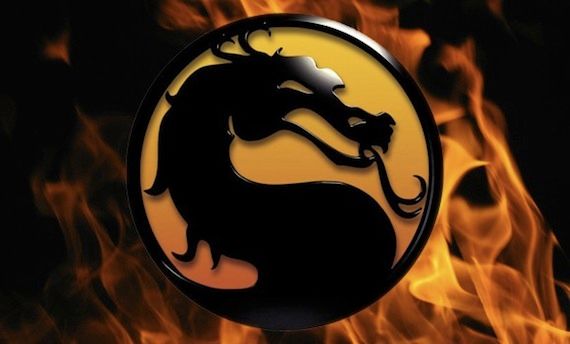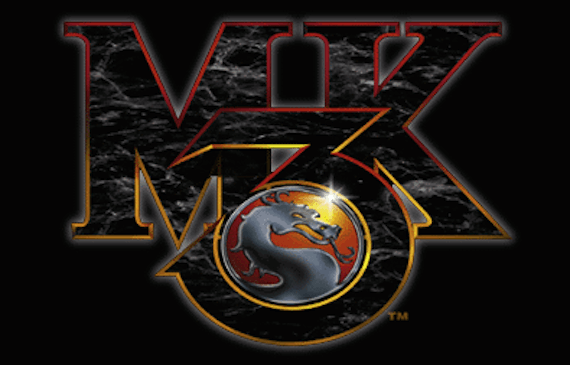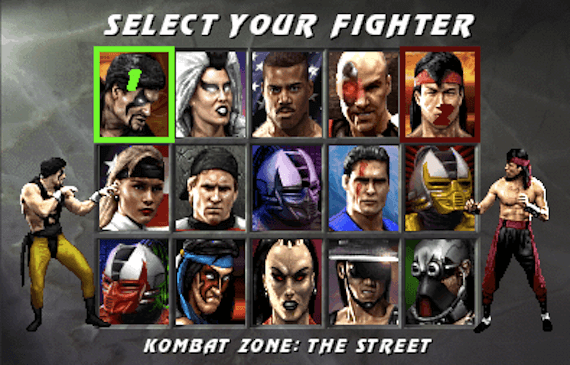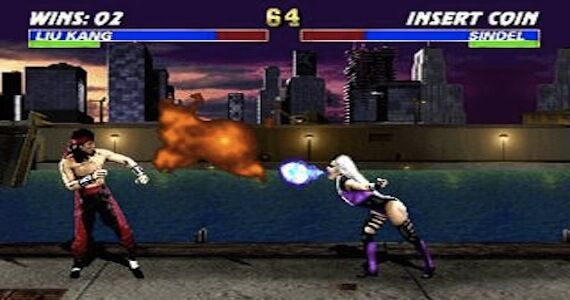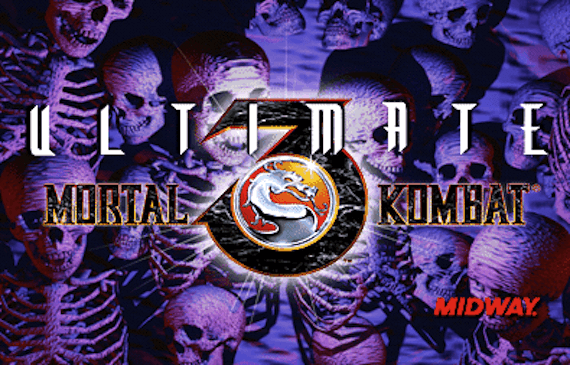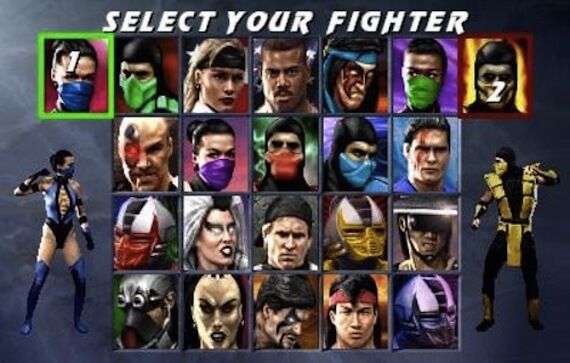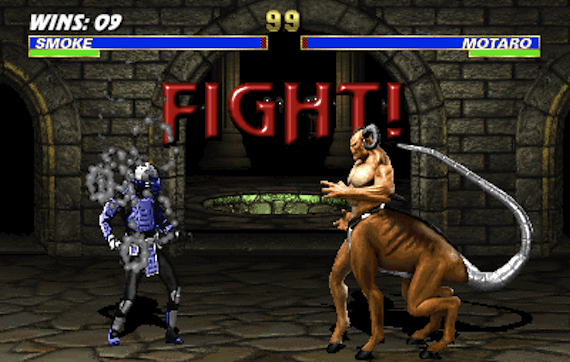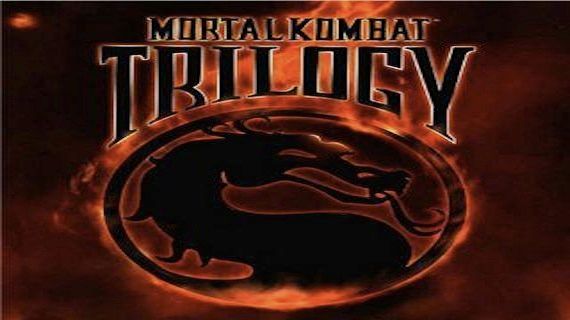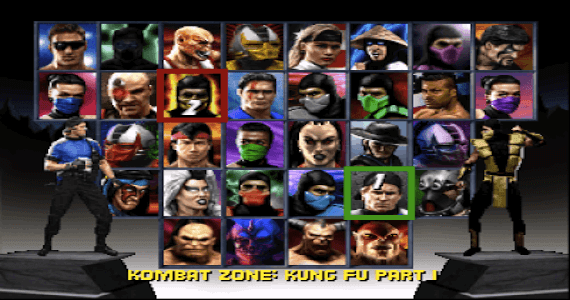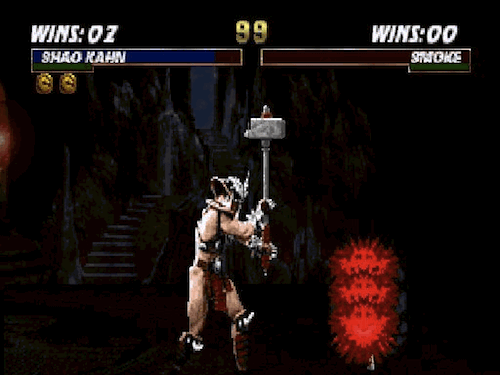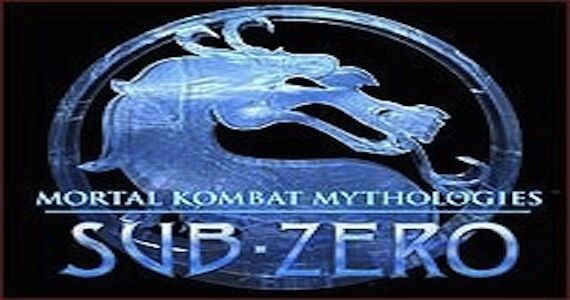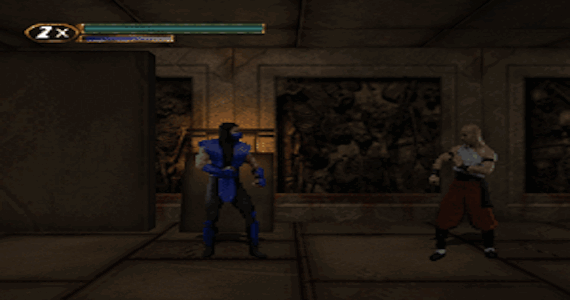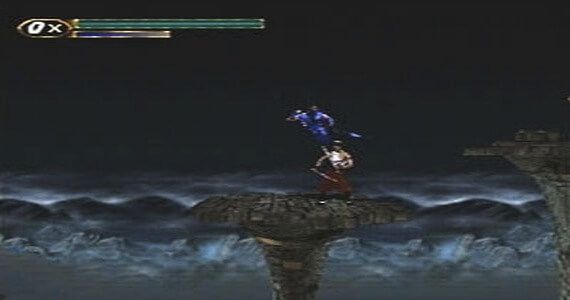Yesterday we kicked off Mortal Kombat week here at Game Rant with our choices for the 10 Most Awesome Mortal Kombat Characters as well as published the first installment of our Mortal Kombat retrospective.
Later today we'll publish our review of the latest Mortal Kombat title but, in the mean time, check out part 2 of our feature A History of Violence: A Look Back At The 'Mortal Kombat' Series for a look at Mortal Kombat 3 and Mortal Kombat Mythologies: Sub-Zero.
We'll keep updating the stories with links to subsequent installments but, for now, here's a guide to help you navigate to the other articles in the series.
- Mortal Kombat and Mortal Kombat II
- Mortal Kombat 3 and Mortal Kombat Mythologies: Sub-Zero (you are here)
- Mortal Kombat 4 and Mortal Kombat: Special Forces
- Mortal Kombat: Deadly Alliance, Mortal Kombat: Deception, and Mortal Kombat: Shaolin Monks
- Mortal Kombat: Armageddon, Mortal Kombat vs. DC Universe, and Mortal Kombat 9
In 1995, the world was introduced to Mortal Kombat 3, which very quickly became a smash hit. It was the first to make significant changes to the established system. The title added a Run button, allowing players to move quickly across the screen and prevent their opponent from getting the advantage - which was considered a downside of the previous two games.
Also, instead of performing a special feat to meet up with the secret characters, the game introduced "Kombat Kodes." On the versus screen, if someone rearranged the symbols at the bottom into the proper order, they could change and add various aspects of the match. Players could eliminate certain game mechanics, such as blocking or throwing, make the screen go dark, change the characters, or be able to go straight to the final boss after the victory. The feature also allowed players to fight either Noob Saibot - or a new version of Cyborg version of Smoke. The upcoming Challenge Tower feature is based on the concept.
In addition to the already established Fatalities, Friendships, and Babalities, a couple of new ideas were added. The first was a Mercy, which would give your opponent an extra bit of health after a defeat, so you could fight a bit longer.
Also, performing a Mercy was necessary in order to use the newest kind of "-ality," the Animality. Once a player showed Mercy, and then defeated their opponent again, they could transform their character into a wild animal that would kill, maul, or devour the opposing fighter. The concept was actually based on a rumor going around during the previous game's run, continuing Mortal Kombat's trend of making rumors a reality.
In terms of story in the prior installment, Liu Kang successfully won the tournament and defeated Shao Kahn - causing him to set-off a backup plan he started over 10,000 years ago. Shang Tsung and the rest of his sorcerer minions revived Sindel, the emperor's dead queen, on Earth - causing Earth to merge with Outworld which allowed Shao Kahn to take over. Raiden managed to save a few souls (but the remainder of humanity was killed in the merger. Shao Kahn then sends out extermination forces, lead by the centaur Motaro, to kill off any survivor - meaning Raiden's chosen warriors have to fend for their lives and defeat Shao Kahn again to set the realms right.
Liu Kang returns again, along with his fellow Shaolin monk Kung Lao, to defeat Shao Kahn once and for all. Sonya makes her return as a playable character and joins forces with Jax to track down Kano, who is also playable again and has sided with Shao Kahn's extermination squad, along with Shang Tsung. Sub-Zero looks to aid the forces of good, but also has to contend with the Lin Kuei's new habit of turning their fighters into robots.
The Lin Kuei already had three success stories on their hands - the yellow robot Cyrax and the red robot Sektor. The third was Sub-Zero's former-friend Smoke, now a blue robot, and the very first unlockable character in an arcade fighting game. Once a player finished Arcade Mode, they were allowed the chance to input a 10-digit code - which, if entered correctly, permanently unlocked Smoke as a reward.
Other playable characters included the aforementioned Sindel, Shao Kahn's former queen, and Kitana's birth mother, who committed suicide years ago; Kurtis Stryker, an average New York cop who got caught up in the battle between Earth and Outworld; Nightwolf, a Native American shaman eager to help defeat Shao Kahn and simultaneously bring respect to his family; Sheeva, a member of Shao Kahn's extermination forces and a Shokan warrior (the same race as Goro and Kintaro); Lastly, Kabal, a former member of the Black Dragon (the same mercenary group as Kano is affiliated with), now looking to redeem himself.
Mortal Kombat 3 had little to no problems from a technical standpoint, even when it was ported to the major home systems, which now included the Sony PlayStation. Instead, it had a few complaints from a more personal standpoint, mainly the character roster. While a number of familiar faces were in the game, a greater number of them were missing from the new title. Most notable of these was Scorpion, who had since become the most popular character in the franchise.
Even characters who were mentioned in the story of the game, such as Raiden, didn't appear in the title at all. While their absence didn't detract from the game at all, it did affect the Mortal Kombat 3's popularity. As result, the folks at Midway decided to make some improvements.
Continue reading A History Of Violence: A Look Back At The 'Mortal Kombat' Series for a look at Ultimate Mortal Kombat 3 and Mortal Kombat Mythologies: Sub-Zero...
The improvements would arrive later that same year in Ultimate Mortal Kombat 3. The game's sole purpose was to address the fan complaints - and bring back many of the missing characters. It also included a few other changes and additions as well. The title included an eight-man tournament mode, as well as "endurance matches" where one player would fight up to three opponents at a time.
While Ultimate Mortal Kombat 3 included an extra stage Fatality (in the form of Scorpion's Lair), which joined the Pit 3, The Subway, and Shao Kahn's Tower, it was actually the home ports that added another addition - a new kind of "-ality", the Brutality. Brutalities were once again a response to fan-made rumors about Mortal Kombat 3 (which were likely inspired by a similar finisher in competitor Killer Instinct). When prompted, the Brutality required players to perform a complicated button combination that resulted in the winner beating up an opponent until they exploded.
Choosing to perform a brutality over a fatality was certainly all about bragging rights - since the pay-off, itself, was somewhat lackluster. As a result, the overly-complicated addition didn't exactly catch-on with fans.
As mentioned, many of the "ninja" characters that didn't appear in the previous edition were made playable here. The main plot of the title didn't change - just expanded with the new additions. Jade made her first playable appearance here, acting as a spy within Shao Kahn's armies - while attempting to help her friend Kitana overthrow the emperor. Kitana herself wanted to defeat Shao Kahn so she could free her mother Sindel from his control. Scorpion returned to watch over Sub-Zero as penance for killing his older brother and Reptile continued his service to Shao Kahn, this time targeting Kitana for betraying him.
A few more characters were included, but had to be unlocked via the Kombat Kodes section. Mileena was originally killed by Kitana back in the second game, but was revived by the mysterious being known as Shinnok - and now acted as a spy for him within Shao Kahn's army. Ermac, a red ninja was introduced, based off of an error from back in the first game that changed Scorpion's name to Ermac - and the color of his outfit to red. Very little was known about him at first, though it was later explained that he was comprised of various souls stolen by Shao Kahn. The original Sub-Zero also returned in the title - though, how his return fits into the larger canon storyline is debatable. Finally, a special code on the select screen would allow players to use the human version of Smoke.
Two more characters were included, but were only playable in the home versions of the game. Noob Saibot returned once again and could be selected via a special code - like in the last game. He was only playable in the Genesis and Super Nintendo versions of the title - where it was revealed that he was a member of the cult known as the Brotherhood of Shadow, and was actually a spectre from the NetherRealm, the same place Scorpion returned from.
The other playable addition was a purple ninja known as Rain. Rain was only seen in the opening montage of the arcade game, and could not be used or fought at all. He was made playable in the same ports as Noob, where we learned that he was the prince of Edenia, the same realm Kitana, Jade, and Sindel were from - which had merged with Outworld. He turned his back on Edenia and served in Shao Kahn's army, though his reasons for doing so were never explained.
Interestingly enough, Ultimate Mortal Kombat 3 has the unique distinction of having the most ports out of any of the entire series. In addition to its initial releases, as well as being included in Mortal Kombat Armageddon and on Xbox Live Arcade, the game was also re-released as Mortal Kombat Advance for the GameBoy Advance. The port was not well received, due to bad controls and the removal of a lot of what made Mortal Kombat great. Then it was released again as Ultimate Mortal Kombat for the Nintendo DS. This installment was received better than Advance, and is considered one of the more faithful ports of the game. The title is also available on the iPhone, with the most notable change being new 3D graphics.
While the improvements were very well-received, change was on the horizon. The time of the arcade was slowly coming to an end - as developers were now focusing on home consoles. The systems were changing as well, focusing more on the development of 3D graphics. The Sony PlayStation had already arrived and the Nintendo 64 was soon to follow. Midway knew they would have to adapt to make it with the next generation of games. Before they did that, however, they decided to make one last adjustment to their latest title to celebrate how far they'd come.
The end result was Mortal Kombat Trilogy. It was the very first Mortal Kombat game to go directly to the home consoles, and featured every single character to ever appear in the series to date.
The game also included a new feature called the "Aggressor Bar," which would fill as blows were exchanged. Once full, the player could move faster and their moves would be stronger for a short period of time. The Nintendo 64 version of the game also included 3 on 3 battles, similar to the 2 on 2 feature introduced in the previous game.
Very little was changed to the story of the game - as newly returning kombatants were retro-fitted into the Mortal Kombat 3 narrative. Baraka simply continued his wanton killing, though he now did it alone instead of with Shao Kahn; Johnny Cage was actually killed by the initial attack from the extermination forces, but was temporarily brought back to life to aid in the battle; Raiden's powers were severely weakened by the merger, and has to help the heroes defeat Shao Kahn in order to regain his full-God-status. In addition, four "classic" characters were included, namely the MK1 versions of Raiden and Kano, and the MK2 versions of Jax and Kung Lao. Also, the four boss characters Goro, Shao Kahn, Motaro, and Kintaro were made playable for the first time. Finally, by once again entering a secret code, players could fight as Chameleon - a multi-colored ninja that used the powers of all the male ninja characters.
Some of the additions only applied to the CD based ports of the game, however. The N64 port, due to low storage space on the cartridge, didn't have the classic characters or Goro and Kintaro. Also, Shao Kahn and Motaro were only playable after entering an unlock code. The current Sub-Zero was absent in place of his older brother, and instead of the male Chameleon, one could play as a female Khameleon, who was of the same race as Reptile - and drew on the powers of the female ninjas.
Whether or not the game itself was a balanced culmination of the previous 2D titles is debatable - but the fan reception indicated that it didn't really make a difference. Gamers had already moved on to the next dimension, and a 2D fighter like Mortal Kombat was considered old hat. It was clearer than ever that it was time to move on and change with the times.
Before they made the next fighting game, however, Midway got an idea. Maybe it was time to experiment a bit, and try moving the series into other genres. The concept could be used to expand the mythology of the game and give a better understanding of the larger story.
Continue reading A History Of Violence: A Look Back At The 'Mortal Kombat' Series for a look at Mortal Kombat Mythologies: Sub-Zero...
This experiment resulted in Mortal Kombat Mythologies: Sub-Zero. An attempt to branch out into other gaming genres. The title was a side-scrolling game, similar to the Mega Man franchise in its combination of platforming and beat-em-up action. Sub-Zero would gain new powers over time, which went along with the increasing difficulty and challenging boss battles.
The game actually focuses on the original Sub-Zero, and takes place before the first game. A sorcerer by the name of Quan Chi (more on him next time) hires Sub-Zero to track down a map that would lead to an incredible treasure.
Quan Chi also hired the services of a rival clan known as the Shirai-Ryu. The stakes were high: the winning clan member would be paid - and the entire losing clan would be wiped out. Sub-Zero wins, killing another infamous warrior in the process - Scorpion. As promised, Quan Chi had the rest of the Shirai-Ryu exterminated and then hires Sub-Zero to follow the map to its location in order to retrieve a special amulet.
After going through the temple and defeating four elemental gods, Sub-Zero successfully secures the amulet - only for Quan Chi to steal it away in an attempt to release his master, the former god Shinnok. At the urging of Raiden, Sub-Zero enters the NetherRealm to get it back. After dispatching Scorpion again, Sub-Zero defeats three demons under Quan Chi's command - and finally Quan Chi himself. The Lin Kuei warrior then manages to steal the amulet from Shinnok and escape the NetherRealm.
Though the main plot itself wasn't as important as it seemed, the aftermath had a number of ramifications. For starters, it was revealed that Quan Chi gave Shinnok a fake amulet - which would come into play in Mortal Kombat 4.
Although the game was released for both the Sony PlayStation and Nintendo 64, neither version was warmly received. Many gamers wanted new 3D focused games, meaning a side-scrolling title like Mythologies: Sub-Zero was already outdated.
Even without this factor, the game itself wasn't that great - moving too slowly for a side-scroller, while sporting sub-par graphics. The experiment wasn't a total failure, i.e. it sold well-enough, but the game failed to encourage the developers to experiment again any time soon.
The next title in the main series was ready to go -and it promised to follow suit with the current trend. Mortal Kombat was ready to move to the third dimension.
Check back tomorrow for the second installment in our Mortal Kombat retrospective for Mortal Kombat 4 and Mortal Kombat: Special Forces.

